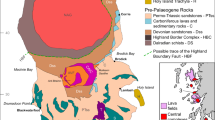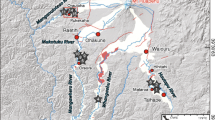Abstract
The evolution of the Somma-Vesuvius caldera has been reconstructed based on geomorphic observations, detailed stratigraphic studies, and the distribution and facies variations of pyroclastic and epiclastic deposits produced by the past 20,000 years of volcanic activity. The present caldera is a multicyclic, nested structure related to the emptying of large, shallow reservoirs during Plinian eruptions. The caldera cuts a stratovolcano whose original summit was at 1600–1900 m elevation, approximately 500 m north of the present crater. Four caldera-forming events have been recognized, each occurring during major Plinian eruptions (18,300 BP "Pomici di Base", 8000 BP "Mercato Pumice", 3400 BP "Avellino Pumice" and AD 79 "Pompeii Pumice"). The timing of each caldera collapse is defined by peculiar "collapse-marking" deposits, characterized by large amounts of lithic clasts from the outer margins of the magma chamber and its apophysis as well as from the shallow volcanic and sedimentary units. In proximal sites the deposits consist of coarse breccias resulting from emplacement of either dense pyroclastic flows (Pomici di Base and Pompeii eruptions) or fall layers (Avellino eruption). During each caldera collapse, the destabilization of the shallow magmatic system induced decompression of hydrothermal–magmatic and hydrothermal fluids hosted in the wall rocks. This process, and the magma–ground water interaction triggered by the fracturing of the thick Mesozoic carbonate basement hosting the aquifer system, strongly enhanced the explosivity of the eruptions.
Similar content being viewed by others
Author information
Authors and Affiliations
Additional information
Received: 24 November 1997 / Accepted: 23 March 1999
Rights and permissions
About this article
Cite this article
Cioni, R., Santacroce, R. & Sbrana, A. Pyroclastic deposits as a guide for reconstructing the multi-stage evolution of the Somma-Vesuvius Caldera. Bull Volcanol 61, 207–222 (1999). https://doi.org/10.1007/s004450050272
Issue Date:
DOI: https://doi.org/10.1007/s004450050272




